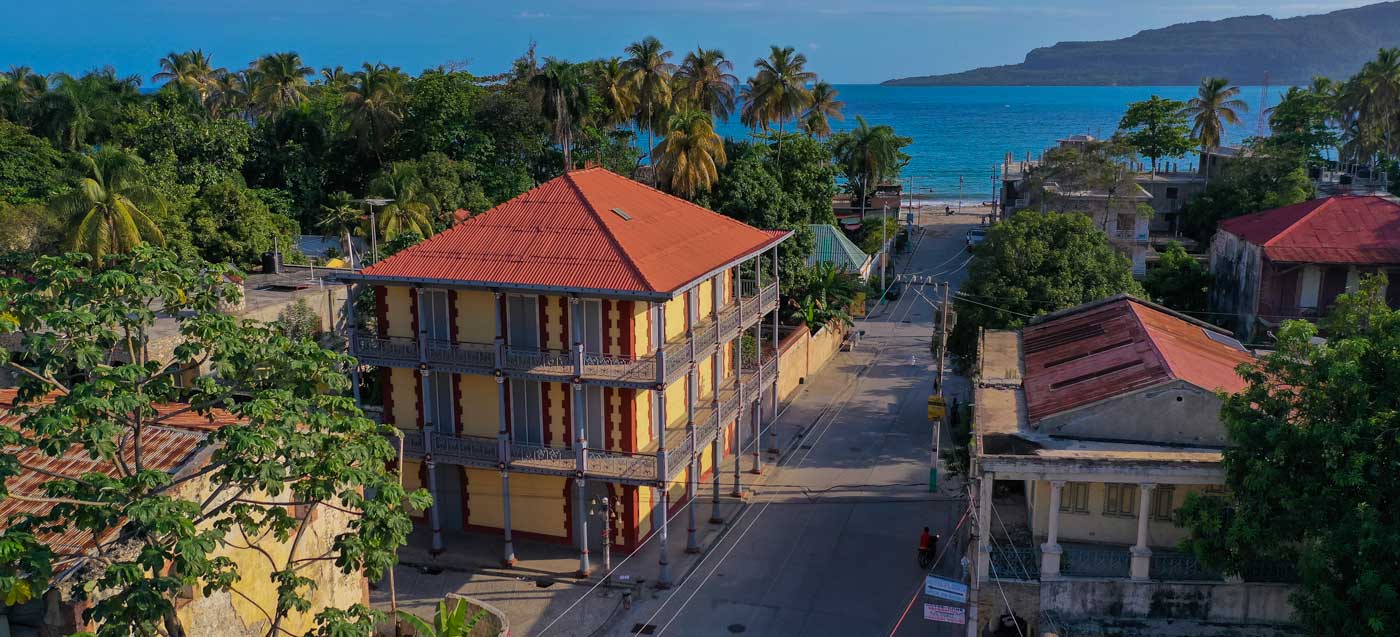
Photo: Anton Lau
Gingerbread Houses
“an important architectural and cultural heritage, not just for Haiti but also for the international community.”
Gingerbread Houses are ornate turn-of-the-century buildings unique to Haiti. Like their edible namesake, Gingerbread Houses are famous for steep roofs and ornate details highlighted in vibrant, contrasting colours. They are architecturally fascinating for a number of reasons – not least because they’ve proven to be surprisingly resistant to earthquakes.
An iconic feature of urban communities around Haiti, these ageing architectural masterpieces have survived a century of turmoil and natural disaster, and are a compelling conservation opportunity. And they’ve just been formally recognised as one of the most important at-risk heritage sites in the world.
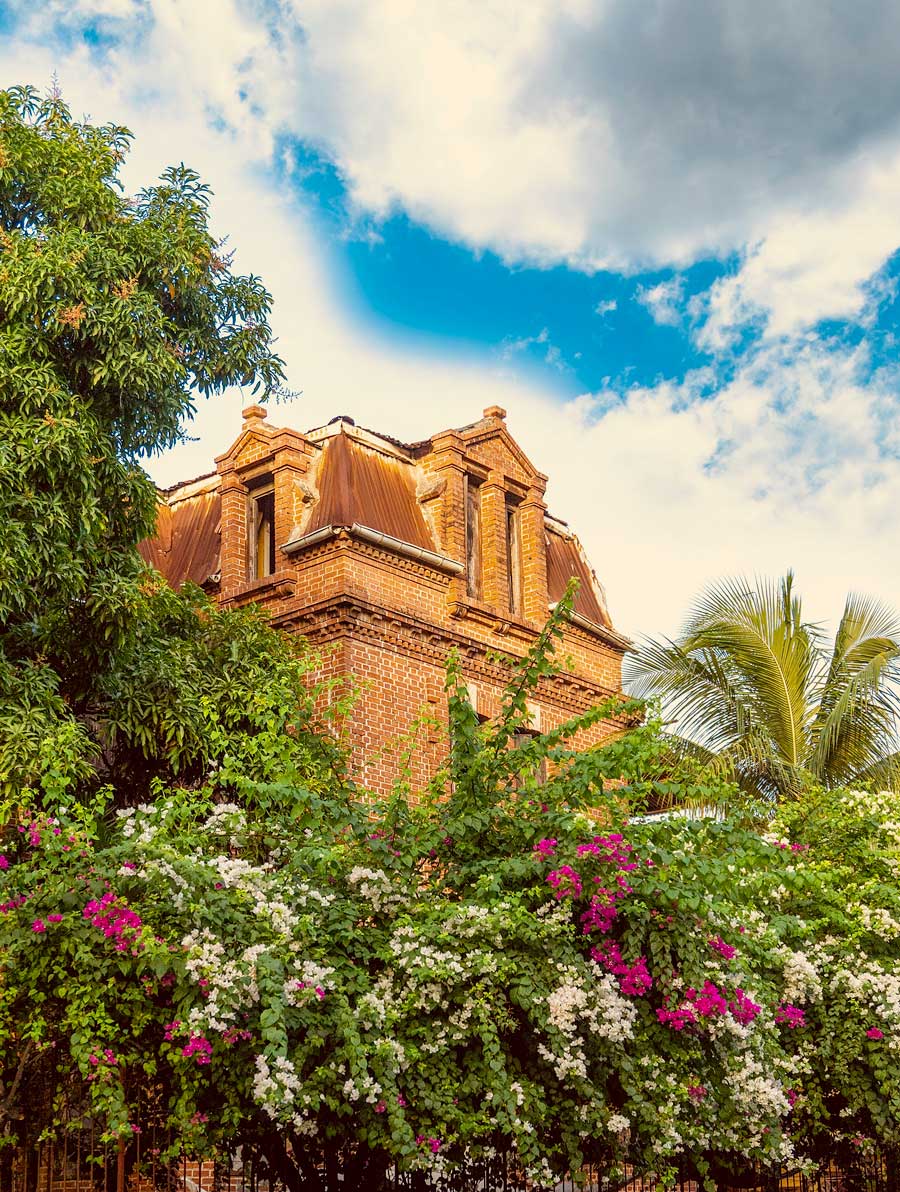
Photo: Mozart Louis
Where can you see Gingerbread Houses?
These stately relics are scattered throughout Port-au-Prince, but are concentrated in the neighborhoods of Pacot, Turgeau, Bois Verna, and Bas Peu de Choses. You’ll also find Gingerbread Houses in other cities around Haiti, including Jérémie, Jacmel, and Cap-Haïtien.
Who were they built for? What are they used for now?
Originally, Gingerbread Houses were built as the residences of powerful Haitian families, and many surviving examples have housed Haitian presidents. During the 1900s, some of these Gingerbread residences were acquired or built by Catholic institutions, which is why many of the Catholic schools and buildings you can see today are examples of the Gingerbread style.
During Haiti’s boom time as a fashionable travel destination in the 1950s and 60s (when the moniker “Gingerbread” was first introduced by American tourists), Gingerbread Houses were symbols of prestige, used as the seasonal residences of stars like Truman Capote, Noël Coward, Graham Greene and Katherine Dunham, who stayed at the Hotel Oloffson or bought Gingerbread Houses of their own.
Today, most of the investment in Gingerbread Houses comes from the arts. Organizations like Kolektif 509, FOKAL, Fondation Viviane Gauthier and Le Centre d’Art are restoring iconic Gingerbread Houses and opening them up to the public as spaces to preserve, practice and promote Haitian art forms.
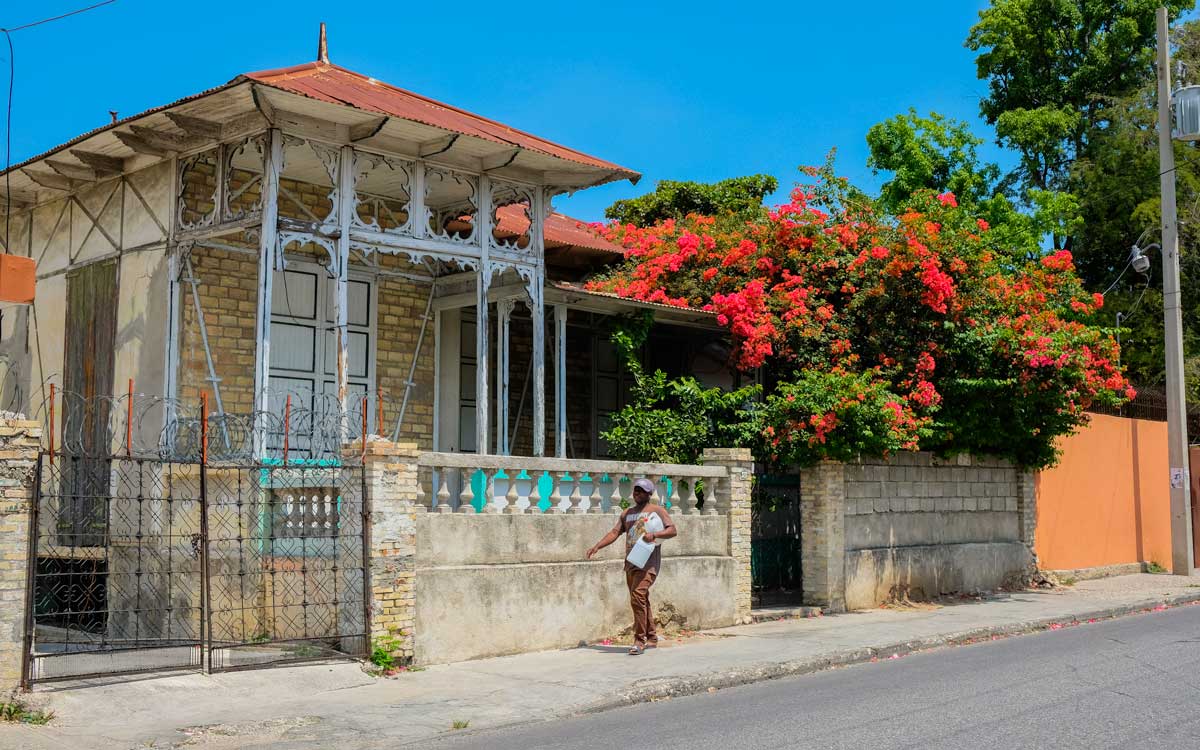
Photo: Franck Fontain
Architectural style
In 1895, three young Haitians travelled to Paris to study architecture, and adapted Parisian architecture to the Caribbean climate and living conditions. Together, these young architects refined the architectural style now known as “Gingerbread”, designing civic buildings and residences that combined French-inspired, Victorian Gothic grandeur with flamboyant colors and vivid decorative patterns – including vèvè symbols from Haitian Vodou.
Designed for Haiti’s tropical hot and humid weather, Gingerbread Houses feature tall ceilings, doors and windows as well as wrap-around verandahs, all decorated in a vibrant, distinctive style with elaborate details unique to Haiti. Most Gingerbread Houses were constructed using natural, flexible timber frames that have the innate ability to weather some of the Caribbean’s toughest storms (and as it turns out, even earthquakes).
Inside, they’re a mastery of climate-control, with high ceilings and tall turret roofs designed to draw hot air upwards and out of living rooms. Louvred shutter windows allow cool breezes in and keep moisture out. In the leafy suburbs of Pacot, Pétion-Ville and Turgeau, these majestic windows open out onto picturesque views of the city. Luxurious, extended front porches plunge onto stately grounds with manicured tropical gardens.

Photo: Anton Lau
Conservation
By the 21st century, many of these once-elegant, century-old structures had fallen into disrepair. Although the communities of people living in and caring for Gingerbread Houses had made substantive efforts to preserve them, political and economic conditions meant that only some of these iconic buildings could be adequately preserved.
As a whole, the historic Gingerbread House district of Port-au-Prince wasn’t getting the support it needed as an at-risk cultural heritage site. In 2009, the Haitian Leadership and Education Program (HELP) successfully brought Gingerbread Houses to the attention of the World Monuments Fund (WMF), in the hopes of generating support for the restoration of these irreplaceable treasures. In late 2009, Haiti’s Gingerbread Houses were chosen as one of the WMF’s 2010 World Monuments Watch list.
2010 earthquake
Less than three months later, the devastating earthquake of January 12, 2010 struck. The Haitian government made Gingerbread Houses a conservation priority. Now internationally recognised for their architectural and social significance, local and global cultural heritage organizations mobilized quickly to assess the damage. By early February, teams were touring Gingerbread House sites to inspect and evaluate. Though many suffered serious damage, their traditional construction proved surprisingly earthquake-resistant, and very few of them collapsed.
In fact, less than five percent of Gingerbread Houses collapsed completely, compared with forty percent of modern, conventionally-constructed buildings. Architects are now trying to analyse what makes the fragile-looking, intricate Gingerbread Houses so seismically resistant, in the hopes of designing future homes in Haiti to be more resilient.
2020 World Monuments Watch
In November 2019, the Gingerbread district of Port-au-Prince was chosen as one of 25 globally-important sites on the WMF 2020 World Monuments Watch, a list of exceptional sites that “marry great historical significance with contemporary social impact.”
The Gingerbread district was selected from more than 250 applications, after a series of in-depth reviews by an independent panel of international experts in heritage preservation.
“The chosen locations are determined not only by their architectural value, but also by their impact on communities around the world,” said Bénédicte de Montlaur, CEO of WMF. “These remarkable sites demand sustainable, community-driven solutions that bring people together and combine conservation and social change”
Being on the 2020 Watch list means that local stakeholders working to preserve Port-au-Prince’s Gingerbread district will now receive crucial funding from the WMF and its international financial partners. Hopefully, the hard work of local conservation teams will now have an even bigger impact.
A compelling conservation opportunity
Port-au-Prince’s historic Gingerbread Houses embody Haiti’s cultural heritage in a nutshell: rich and incredibly valuable as a cultural and economic resource for contemporary Haitians and future generations to thrive – but also endangered, under-documented and underfunded.
Make a difference by visiting Port-au-Prince’s Historic District today. If you’re lucky, you might get to meet the communities of artists and conservationists working to revitalize these extraordinary treasures.
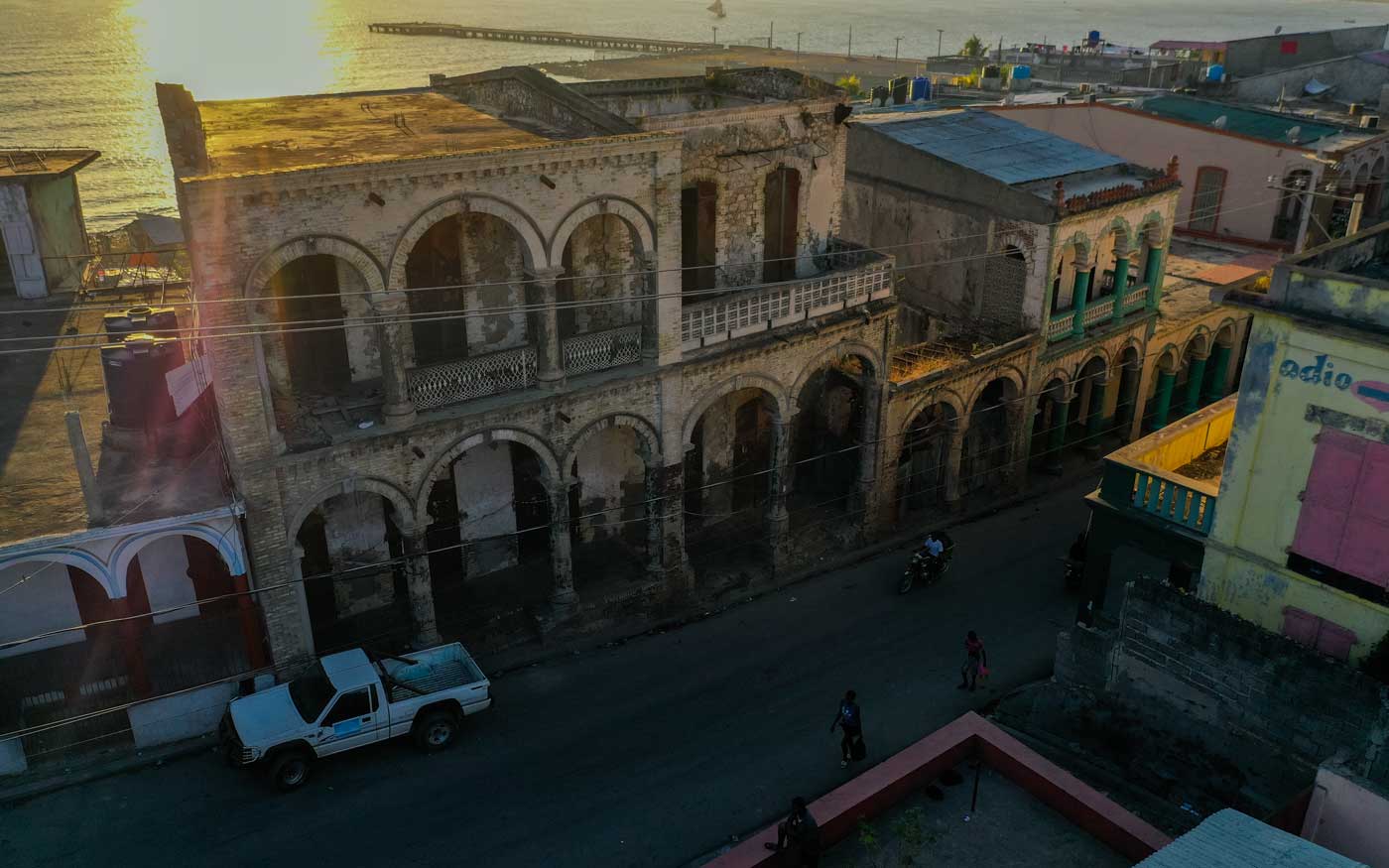
Photo: Anton Lau
Go on a self-guided tour of Gingerbread houses
Open to the public in Port-au-Prince
Villa Kalewès – 99 Rue Gregoire, Petion-Ville. Easily recognizable by the rich gingerbread color of its fairy-tale wooden walls and icing-like white lace edging. One of the most important Gingerbread structures in Petionville, Villa Kalewès remains both in-use and, lucky for us, open to the public. Villa Kalewès isn’t open every day, so make sure to visit during an advertised event or call head to check.
Maison Dufort – 9 2eme Rue du Travail, Turgeau, Port-au-Prince. Open to the public 9am – 4pm. Maison Dufort was extensively restored by nonprofit FOKAL (Foundation Connaissance et Liberté) between 2012 and 2018. To find out more, ring 2813-1694 or email studiofokal@fokal.org. Voyages Lumière run guided tours in French and English.
Gingerbread restaurant – 22 Rue 3, Port-au-Prince. Open 11am to 10pm Monday thru Saturday. Closed Sundays.
Hotel Oloffson – Ave Christophe, 60, Port-au-Prince. A working hotel, Hotel Oloffson also has a restaurant where non-guests are welcome for lunch (US $12-15) and dinner (US $15-25), as well as a famously good live Vodou rock show every Thursday night. Originally built as the residence of an influence family, Hotel Oloffson has been a presidential residence, a US military hospital (during the 20-year US occupation of Haiti from 1915 to 1935) and a hotel since 1936. Glorified in Graham Greene’s 1966 novel The Comedians.
Le Centre d’Art / Larsen Family House – 22 rue Casseus, Pacot, Port-au-Prince. In late 2019, this house was purchased from the Larsen family and will become the new home of Le Centre d’Art. The old premises of Le Centre d’Art, at 58 rue Roy, were damaged beyond repair during the 2010 earthquake.
Maison Gauthier – In the heart of the historic Gingerbread district, Maison Gauthier “represents both the life of the celebrated doyenne of Haitian folkloric dance, Viviane Gauthier, and one of the finest examples of gingerbread architecture in Haiti.” In 2015 the Fondation Viviane Gauthier was established to restore the villa and maintain it as a place to teach and promote Haitian folkloric dance.
Open to the public outside Port-au-Prince
In Jacmel it’s possible to see inside a Gingerbread House at Hotel Florita, Hotel Manoir Adriana, Sant d’A Jakmel and Alliance Francaise.
In Cap-Haitien it’s possible to go inside Hotel Roi Christophe and Alliance Francaise.
Not open to the public
The Peabody House – hidden from view by dense tropical gardens, the Peabody House is near the corner of Rue Pacot and Rue Malval in Pacot, Port-au-Prince.
The Cordasco House (also known as Villa Marimar / Le Petit Trianon) – a 19th century gothic Gingerbread mansion in Pacot, Port-au-Prince.
Villa Castel Fleuri – Avenue H. Christophe, Port-au-Prince. Briefly home to the President of Haiti, Villa Castel Fleuri suffered extensive damage during the 2010 earthquake.
Le Manoir – Avenue John Brown, Port-au-Prince. Has remarkable roofs and turrets constructed with decorative pressed metal roof shingles.
The Patrice Pamphile House – 4 Rue Casseus, Turgeau, Port-au-Prince. Extensively damaged by the 2010 earthquake.
Maison Chenet, also restored by nonprofit FOKAL between 2012 and 2018.
The Bazin House on Rue du Travail Deuxième, Port-au-Prince.
The house of Jean-Richard Montas – 79 Avenue H. Christophe, Port-au-Prince.
Gingerbread House built by Tancrede Auguste – 32 Lamartiniere, Port-au-Prince.
Wood-frame house – 24 Avenue Lamartiniere, Port-au-Prince.
A charming example of a smaller and simpler Gingerbread House – 26 Rue 7
A large and elaborate Gingerbread House, still surrounded by its original
spacious property, at 9 Rue Bellvue, Port-au-Prince.
Gingerbread House – 51 Avenue Christophe, Port-au-Prince.
Gingerbread House at 59 Lavaud 3, Port-au-Prince.
Gingerbread House at 14 Rue Marcelin, Port-au-Prince.
Gingerbread House at 32 Lamartiniere, Port-au-Prince.
Gingerbread House at the Episcopal University, 14 Rue Légitime, Port-au-Prince.
Gingerbread House at 22 Rue Pacot, Port-au-Prince.
College de Jeunes Filles, at 10 Lavaud, Port-au-Prince.
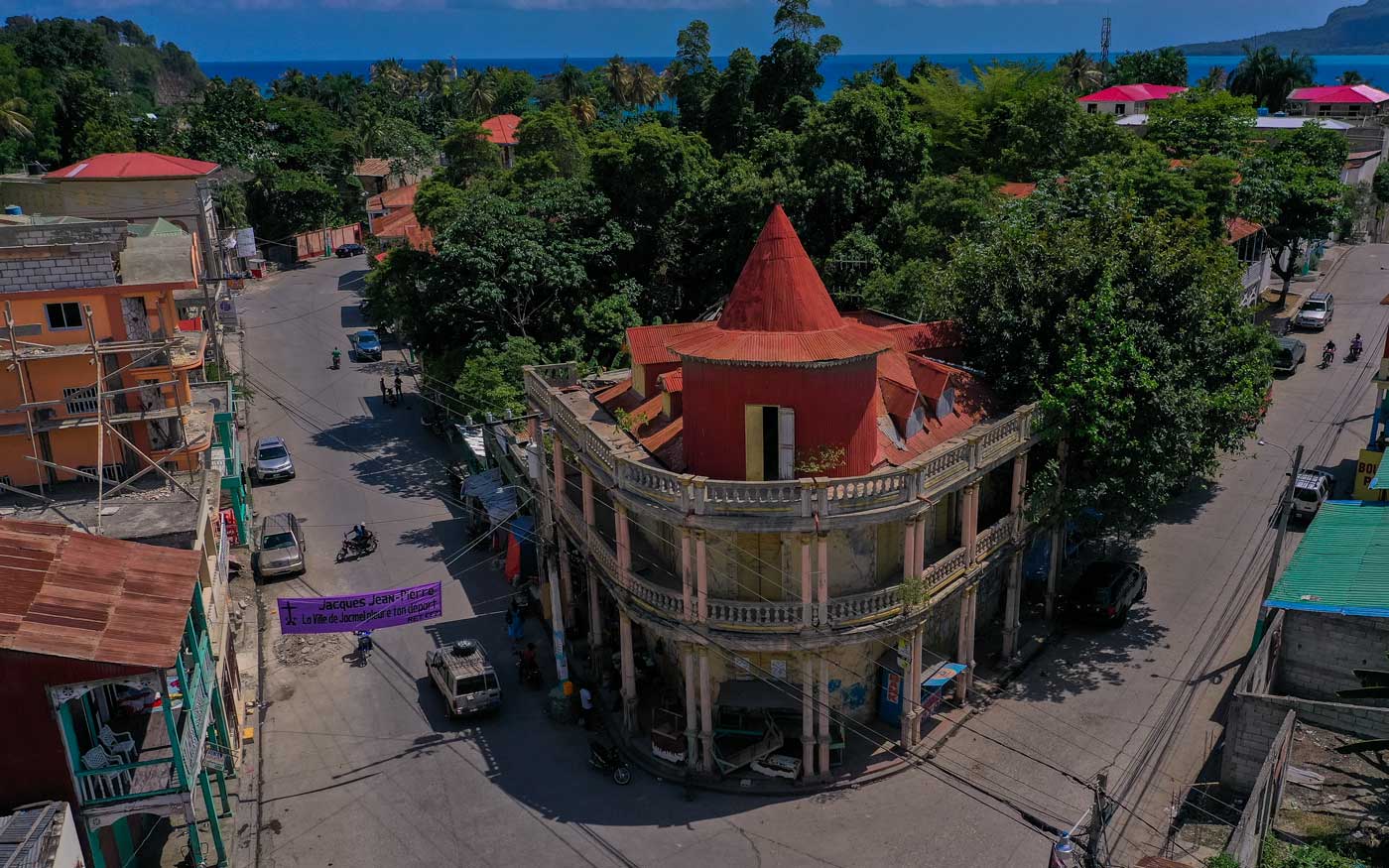
Photo: Anton Lau
Explore Haiti’s History & Heritage

Paradise for your inbox
Your monthly ticket to Haiti awaits! Get first-hand travel tips, the latest news, and inspiring stories delivered straight to your inbox—no spam, just paradise.









